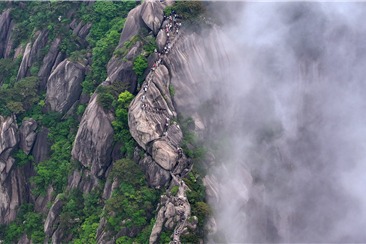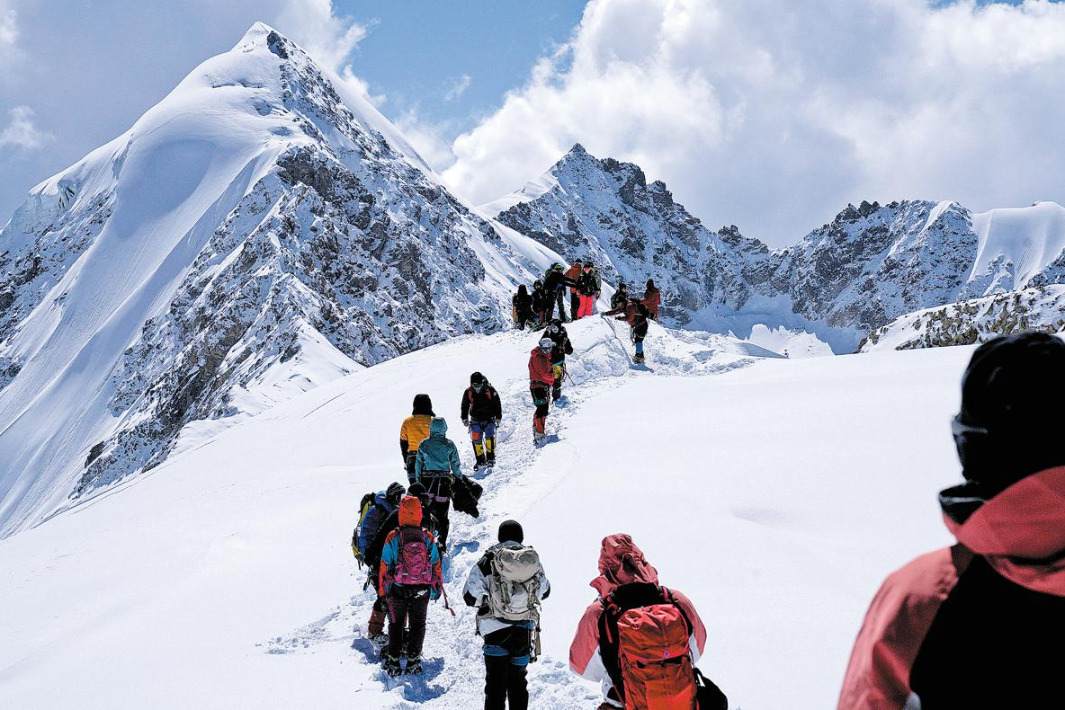Oyster fossils offer new insights into history of global warming

BEIJING -- Oysters are a popular delicacy on the dining table, but they also serve as natural recorders of environmental changes.
Akin to the rings of a tree, the growth bands on oyster shells reveal not only the creature's age but also the climatic conditions at the time they were formed. High temperatures in summer can boost their growth and result in wider and light-colored bands, while low temperatures in winter may slow down their growth and lead to thinner and darker bands.
Scientists believe that reading the growth bands on oyster fossils dating back millions of years can reveal the environmental information of the Earth's past and offer new understanding of the planet's future.
A study led by scientists from China, Germany, Britain and Madagascar focused on four oyster fossils from Madagascar and the Qinghai-Tibet Plateau dating back to the Early Cretaceous (about 140 million years ago), an era when dinosaurs thrived and the climate was warm and greenhouse-like.
They discovered notable seasonal variations in sea surface temperatures, along with periodic melting of polar ice sheets and glaciers, indicating that during that ancient warm era, sea temperatures did not consistently rise but fluctuated instead, with cooler periods allowing polar ice to reform.
These findings, published in the international journal Science Advances earlier this month, have challenged the long-standing view of "minimal seasonality and rare glacial activity during greenhouse climates," revealing the complexity of Earth's climate evolution, said lead researcher Ding Lin, an academician from the Institute of Tibetan Plateau Research, Chinese Academy of Sciences (CAS).
As early as 2014, Ding's team revealed through analysis of ostracode shell fossils that the Gangdise Mountains are older than the Himalayas.
To accurately identify the growth bands, the researchers used advanced instruments to observe the microstructure of the oyster fossils and analyze their chemical composition. Global climate computing models also assisted researchers in verifying the reliability of the data.
They found that in the warm Early Cretaceous, winter ocean temperatures in the Southern Hemisphere's mid-latitudes were 10 to 15 degrees Celsius lower than in summer, similar to current seasonal variations in the same region, which suggests that seasonal temperature variations were still quite noticeable under the ancient greenhouse-like climate.
Moreover, seasonal glacial meltwater possibly flowed into the oceans during that time, much like the summer melting of glaciers on Greenland's ice sheet today, implying that despite the overall warm climate, glaciers still existed and would melt in summer, releasing fresh water into the oceans.
"The Early Cretaceous greenhouse Earth seems like a symphony, and its warm melodies occasionally punctuated by brief glacial notes," said the first author He Songlin, a postdoctoral researcher at the CAS institute.
He predicts that before the polar ice sheet vanishes entirely, there would be an intermediate phase characterized by periodic fluctuations in ice sheet and glacier activity due to global warming.
The study highlights that climate change is not a constant warming trend. Increases in greenhouse gases can result in more frequent extreme weather rather than uniformly rising temperatures.
The study suggests that the brief glacier events 140 million years ago were likely caused by volcanic activity and shifts in Earth's orbit.
"It reminds us that natural factors, alongside human activities, could cause unexpected cooling events in today's warming world," said co-first author Wang Tianyang, a postdoctoral researcher at the CAS institute.
Unlike the common perception of global warming as a steady rise in temperatures, the researchers warn that the climate system can behave in complex and unpredictable ways.
This research opens a new window into Earth's ancient climate and reveals the planet's hidden seasonal rhythms and icy echoes, said co-author Andreas Mulch, a professor at the Senckenberg Biodiversity and Climate Research Centre.
- Oyster fossils offer new insights into history of global warming
- Shanxi firefighters simulate complex cliff rescue scenarios
- Influencer fabricates death in online hoax
- China, Central Asia further strengthen educational cooperation
- Xi calls on countries to work together for world peace, stability, prosperity
- China to offer visa-free policy to 5 countries in Latin America and the Caribbean: Xi





































